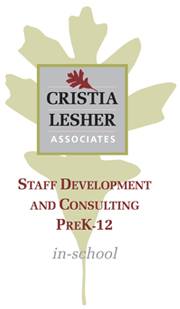#2 Getting kids from manipulatives to written math
Date: April 8th, 2015
By: Tom Schersten
Tom Schersten: Happily, most classrooms in the United States are now using base 10 blocks for modeling place value in the operations of addition, subtraction, multiplication, and division. Unfortunately, teachers are complaining that kids are not making the connection between the concrete operations and the abstract representations with the usual math written symbols.
These connections don’t come automatically. We really have to make explicit connections, one step at a time, with the concrete materials side-by-side with paper and pencil.
Unfortunately, that’s not usually what happens. Usually when we’re trying to make the bridge to doing the written work, we do not have the blocks out on the table. We just have the written work, and we would like kids to recall from yesterday or the day before what we did with the blocks and to talk about it with a written problem.
I happen to think that they’re not physically capable of doing that. Because anytime I ask a kid what they did to solve the problem, they always put their hands right back on the blocks, take them apart to where they started, and redo the whole process with the blocks as their road map as to what words to say.
We have to have the blocks out on the table at the same time that we have the written work. It’s not enough to do the whole problem in the concrete and then the whole problem in the abstract because kids are still not making the connection as to which of these symbols relate to which of these actions we’re doing with the blocks. We really need to have them side-by-side and do it step-by-step.
Please consider this problem of 37 add 28. I’m going to get out three 10-sticks to put right next to the 30, and I’m going to get out seven ones to put right next to the digit seven. I will also model the 28 with two 10-sticks and eight ones.
We’re going to be modeling the traditional algorithm for addition, where we start on the right, and we start by adding seven plus eight. I will add them together. I see that when I have these, I have a lot of ones here. I have enough that I can trade for another 10-stick. I’m going to count out 10 of these ones, 1, 2, 3, 4, 5, 6, 7, 8, 9, 10. I’m going to trade these 10 ones in for a 10-stick. I’m putting the new 10-stick right above where we have the 30 written, because that’s where we’re going to record it. I’ve just done one step, but I now have to do some writing to record what we just did.
The 7 and 8 was enough for a trade, so we have an extra 10. I’m writing my one right where I’ve put the extra 10-stick, above the tens column, and I’m writing the five leftovers that I have here in the ones column. Then I’m going to add up the 10s. Our three 10s and our two 10s and our one 10 make six 10s. So we have the final answer of 65.
Note what I’ve done is one step with the blocks and record what we did. Another step with the blocks, and record what we did. It’s in this process of side-by-side, step-by-step that kids are going to make those explicit connections. There’s a one-to-one correspondence between what we do with the blocks and what symbols we write on the paper.
When kids have that connection, then they understand what they’re doing.
The next video is going to show you how, by understanding place value, you can add a column of figures faster than you could put them into a calculator.

